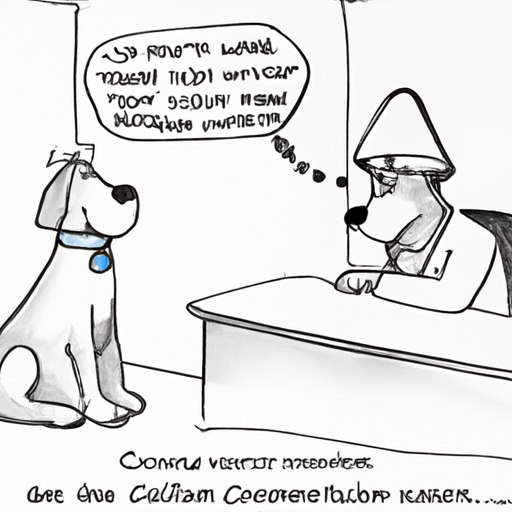Understanding the Purpose of a Cone
Hello, dear caregivers. You’ve probably seen dogs wearing those peculiar plastic cones and wondered what they’re all about. Well, let’s unravel this mystery together.
A dog cone, also known as an Elizabethan collar or E-collar, is a protective device often used in the veterinary world to prevent dogs from reaching their wounds or surgical sites. It’s named after the ruffed collars worn by people in the Elizabethan era.
The Importance of Cones in Post-Surgery Care
In case your furry friend has undergone surgery, the veterinary team will most likely equip him with a cone. This may seem uncomfortable or even cruel, but believe me, it’s for the best. The cone prevents your dog from licking, biting, or scratching the surgical site, which could lead to infection or delay the healing process.
It’s natural for dogs to lick their wounds—it’s their way of soothing discomfort. But, unfortunately, this instinctual behavior can do more harm than good in the case of surgical wounds.
Types of Cones and Their Differences
While the traditional cone is made of hard plastic, there are now various types available in the market, designed to suit different needs and ensure maximum comfort for your dog.
| Type of Cone | Description |
|---|---|
| Plastic Cone | Durable and sturdy, provides maximum protection, but may be uncomfortable. |
| Soft Cone | Made of soft material, more comfortable but less durable. |
| Inflatable Cone | Similar to a travel pillow, provides comfort but less protection. |
How to Help Your Dog Adjust to Wearing a Cone
Helping your dog adjust to wearing a cone requires patience and understanding.
- Positive Reinforcement: Reward your dog for wearing the cone without trying to remove it. This could be verbal praise, petting, or a favorite treat.
- Provide Special Care: You may need to assist your dog in eating and drinking. A raised bowl can help.
- Ensure Comfort: Make sure the cone fits properly and isn’t causing discomfort.
Taking Care of a Dog Wearing a Cone
Lastly, let’s not forget the potential hazards the cone might present. Your dog’s vision will be limited, so remove any obstacles that could cause him to trip or bump into.
- Keep the house clean and free of clutter.
- Watch out for small spaces where your dog could get stuck.
- Be extra attentive during walks.
FAQs
Q: How long should my dog wear the cone?
A: The duration varies depending on the healing process. Always consult your vet.
Q: Can my dog eat and drink with the cone on?
A: Yes, but you may need to elevate the bowls to help your dog reach.
Q: My dog seems really uncomfortable with the cone, what should I do?
A: Consult your vet. There might be alternative options like soft or inflatable cones.
Remember, as caregivers, our role is to ensure our pets’ well-being. While it might seem like an inconvenience, a dog cone is there to protect and speed up recovery. It’s a small sacrifice for a healthier, happier pet.



